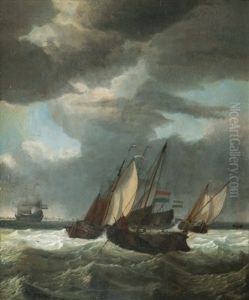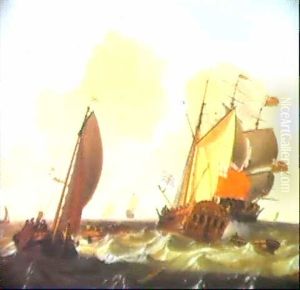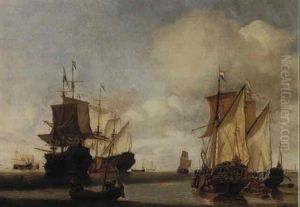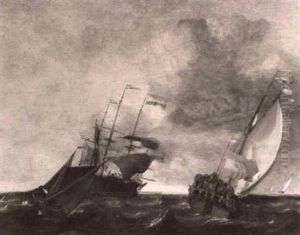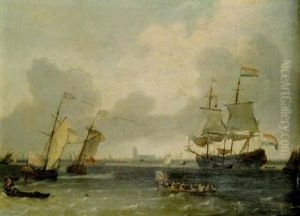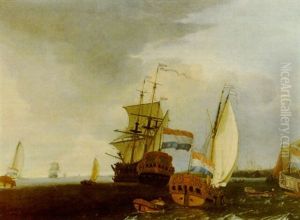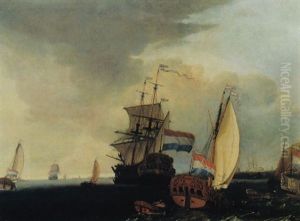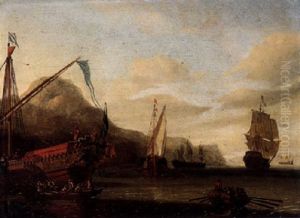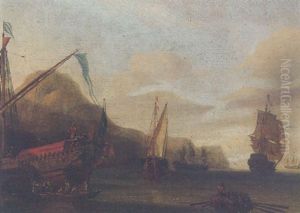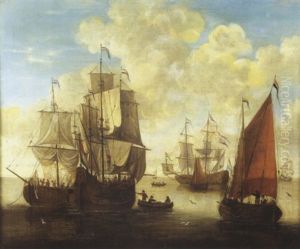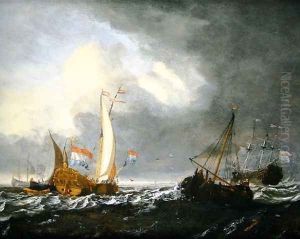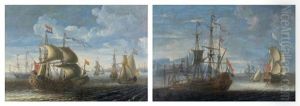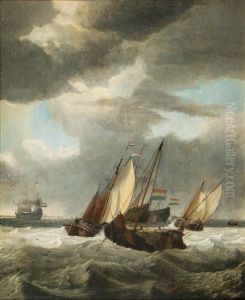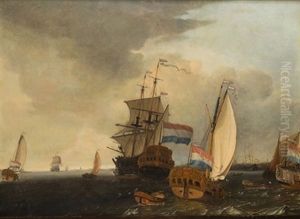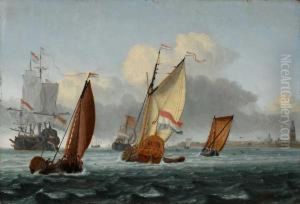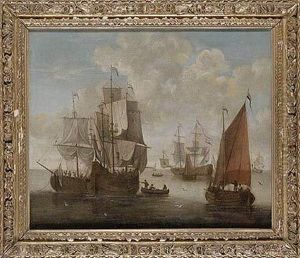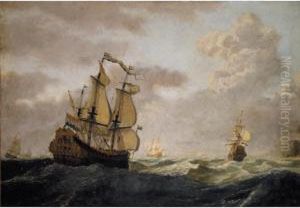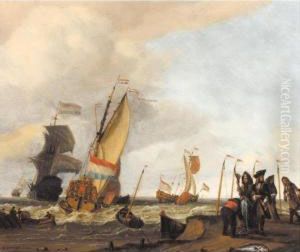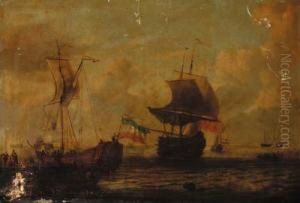Gerrit Pompe Paintings
Gerrit Pompe was a Dutch artist whose life and career were markedly shaped by the historical context of the early 20th century, including the lead-up to and the period during World War II. Born in 1903 in the Netherlands, Pompe's artistic journey was influenced by a country known for its rich artistic heritage, which includes the legacies of painters like Rembrandt and Vermeer. However, Pompe's work and career would diverge significantly from these traditional roots, reflecting instead the modernist impulses that were reshaping art across Europe.
Pompe's early life was characterized by a conventional education in the arts, where he was exposed to both the historical depth of Dutch painting and the emerging trends of modernism. His work began to gain recognition in the 1920s and 1930s, a period when European art was being profoundly influenced by movements such as Expressionism, Cubism, and Dada. Pompe, however, did not strictly adhere to a single movement. Instead, his work exhibited a blend of influences, showcasing his ability to absorb various stylistic elements and transform them into a unique artistic voice.
The outbreak of World War II in 1939 marked a significant turning point in Pompe's life and career. The Netherlands was occupied by Nazi Germany in 1940, and the war years were a time of great personal and professional difficulty for Pompe. Like many artists of his generation, the war's impact on his country and the broader European continent deeply affected him and his work. Despite the challenges, Pompe continued to produce art during these years, though the themes and tones of his work during this period reflected the turbulence and tragedies of the time.
Tragically, Gerrit Pompe's life and career were cut short when he died in 1945, the very year World War II came to an end. Despite his relatively short career, Pompe's contributions to Dutch modernism were significant. His work not only reflects the artistic innovations of his time but also the profound impact of historical events on individual lives and creative expression. Today, Pompe's legacy is preserved in the collections of Dutch museums and galleries, where his pieces continue to be studied and appreciated for their unique blend of traditional Dutch elements and modernist experimentation.
In the post-war period, Pompe's work gained further recognition as scholars and art lovers sought to reassess and understand the contributions of artists who worked during the war years. His paintings, often characterized by a dynamic use of color and form, serve as a testament to the resilience of the human spirit in the face of adversity. Gerrit Pompe remains a figure of interest for those studying the intersection of art, history, and society in the tumultuous first half of the 20th century.
